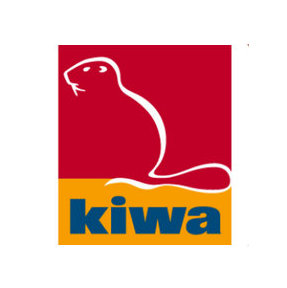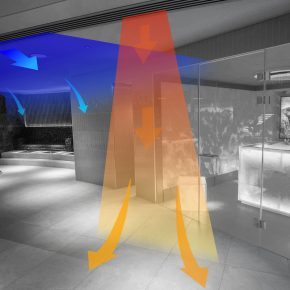
Kiwa BDA on Brexit vote and Building Regulation Applications
Kiwa BDA offer a summary of LABC (Local Authority Building Control) advice to Building Control Inspectors about dealing with Building Regulation Applications prior to the EU Referendum
With the EU Referendum vote just weeks away, what information do we need to be doing while we are still part of the part of the European Community?
Whilst a vote on whether we are in or out is now just a few weeks away, there are things that we need to be doing now as part of the European Community.
Since July 2013, when the Construction Products Regulation became mandatory, manufacturers and designers looking to sell their product(s) in the UK have been able to procure testing by Notified Bodies and/or accredited test houses from anywhere in the EU.
So if Building Control Inspectors are insisting
- BBA certificate is provided to evidence compliance of a product
- BRE test certificate is specified, or
- British Standard test is specified
they may themselves may be acting as a barrier to trade and risk investigation by Trading Standards.
Under the CPR, a construction product has to be CE marked and accompanied by a Declaration of Performance if it is to be placed on the market in the European Economic Area and where it is covered by
- harmonised European product standard (hEN) or
- European Technical Assessment (These are used by manufacturers of products that are not covered by a harmonised European standard but who still wish their products to be CE marked)
The scope of the CPR and associated CE marking is limited to product characteristics for which there are national provisions relating to the products’ use under the following headings:
- Mechanical resistance and stability
- Safety in case of fire
- Hygiene, health and the environment
- Safety and accessibility in use
- Protection against noise
- Energy economy and heat retention
- Sustainable use of natural resources
Interestingly the Scottish Building Regulations are already set out like this and the LABC’s Registered Details are now configured around the assessment of these key factors. National provisions relating to these issues vary between EU Member States and so, although a product may be CE marked, it still may not be suitable for particular applications or for use within some Member States and it is for Building Control to determine its compliance.
What do Building Control Inspectors need to do?
Always make sure they have a translated document(s) issued by a Notified Body/Test House.
For CE marked products or those with an ETA.
Most of the “traditional” building products have a hEN in place already but there are also a range of ETA’s for newer construction. For instance ETA23 relates to prefabricated building units and ETA4 relates to External Wall Insulation. Building Control Inspectors need to cross reference the Declaration of Performance with the relevant parts of the Approved Documents to ensure the product is fit for purpose.
For All other products
The intention is that there will ultimately be Product Standards in place for all construction materials. Until that happens manufacturers will have to:
- Demonstrate that products meet the requirements of the Building Regulations through appropriate testing. This can be through a UK or EU test house as long as there is the EN designation to the standard. Where British Standards carry the nomenclature EN, this means that the test fulfils a “European Norm” and testing in other EU states is carried out in the same prescribed manner. For example BS EN ISO 6946:2007 outlines the thermal resistance and transmittance calculation method used for building components and elements. You will find equivalent testing MSZ (Hungary), DIN (Germany), LVS (Latvia), UNI (Italy), ONORM (Austria), or just EN ISO6946:2007 in other EU states. So if a product is tested to DIN EN ISO 6496:2007 (and you are provided with a translated version from German) it means that it is an equivalent BS test and is therefore acceptable as long as it meets the requirements of the Building Regulations. The testing will provide classification on lambda values. The specification should then determine how the product can be shown to achieve the required U value either in combination or isolation (to prove it does what it says on the tin!)
- Provide evidence that there is third party accreditation in place for the product or the product working in combination with other materials e.g. a modular building element. This is not limited to BBA, BDA or BRE but any UKAS equivalent test house able to provide a classification report (to prove the tin is fit for purpose as a tin!)
- Demonstrate a Quality Assurance process is in place (to prove they can make the tin the same way every time!)
While manufacturers do not need to declare performance for every characteristic of a construction product, they do need to do so for those characteristics for which there are provisions (i.e. regulations or technical rules) in relation to the intended use or uses in the Member States where the manufacturer intends the product to be made available on the market.
Products manufactured outside the EU will need the relevant EN testing to be carried out even though they may have some form of testing undertaken within the manufacturing country. If the testing is to an ISO standard then this is also acceptable as evidence of compliance.
What help is available?
Documentation is required that effectively combines the interpretation of legislative compliance within the member state and dovetails with the product testing, third party accreditation and quality assurance.
LABC Registered Details are assessed in this format and the results listed on the Certificate itself, more information can be found in the Briefing Notes prepared by the research authority.
A Registered Detail is often underpinned by a Building Agrément which in itself pulls together testing, inspection and approvals details on the product or system in a primary source document that incorporates local building regulations.
All Member States will have product contact points for construction and, in due course, the Commission intends to provide a central point of access to them all.
This is an edited version of a source document from the LABC (Local Authority Building Control) and is reproduced in the current format with the kind permission of the LABC (Local Authority Building Control).
Contact:
Kiwa UK Group
Kiwa House,
Melvern View Business Park,
Stella Way, Bishops Cleve,
Cheltenham. GL52 7DQ
Tel: +44 (0)1242 677877
Visit Supplier's page
Latest news

1st April 2025
Gilberts Takes Thermal Comfort to New Heights
Gilberts Blackpool is continuing to build on its reputation as a pioneer with the unveiling of ThermaAstute™ – the most extensive range of thermally sensitive diffusers in the market.
Posted in Air Conditioning, Articles, Building Industry News, Building Products & Structures, Building Services, Facility Management & Building Services, Heating, Ventilation and Air Conditioning - HVAC, Innovations & New Products, Restoration & Refurbishment, Retrofit & Renovation, Sustainability & Energy Efficiency
1st April 2025
University of Bath Student Helps Vent-Axia Win Two Environmental Industry Awards
Leading ventilation manufacturer, Vent-Axia, is delighted that the valuable work University of Bath student Roben Els undertook during an industry placement at the company contributed to it winning two environmental industry awards.
Posted in Air Conditioning, Articles, Awards, Building Industry Events, Building Industry News, Building Products & Structures, Building Services, Heating, Ventilation and Air Conditioning - HVAC, Recruitment, Retrofit & Renovation, Sustainability & Energy Efficiency, Training
1st April 2025
Ahmarra: Fire Doors Designed for Hospitals & Healthcare Environments
Ahmarra is a leading UK specialist in fire doors for healthcare environments, having manufactured and installed thousands of bespoke doorsets for NHS hospitals across London and the South East.
Posted in Access Control & Door Entry Systems, Accessibility, Acoustics, Noise & Vibration Control, Architectural Ironmongery, Articles, Building Industry News, Building Products & Structures, Building Services, Building Systems, Doors, Facility Management & Building Services, Health & Safety, Interior Design & Construction, Interiors, Restoration & Refurbishment, Retrofit & Renovation, Security and Fire Protection, Timber Buildings and Timber Products, Wooden products
1st April 2025
Mitsubishi Electric: New intuitive, IoT-ready centralised controller offers instant access to 400 units
Mitsubishi Electric has launched a new user-friendly, touchscreen controller to offer full remote controllability, monitoring and reporting for up to 400 air conditioning units.
Posted in Air Conditioning, Articles, Building Industry News, Building Products & Structures, Building Services, Facility Management & Building Services, Heating Systems, Controls and Management, Heating, Ventilation and Air Conditioning - HVAC, Information Technology, Innovations & New Products, Pipes & Fittings, Plumbing, Posts, Research & Materials Testing, Retrofit & Renovation, Sustainability & Energy Efficiency
 Sign up:
Sign up: 